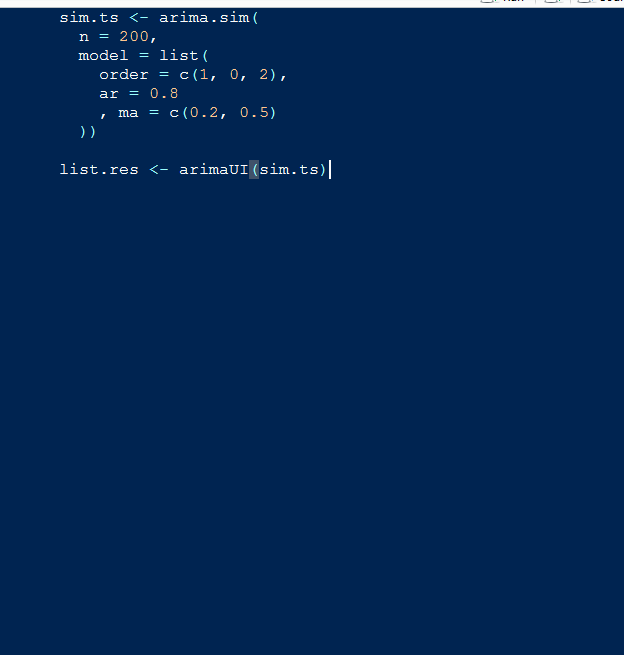Shiny Gadget to Pick ARIMA Parameter

ARIMA is a type of model widely used in time series problems, for exemple to predict sales or stocks.
The learning curve for this model is steep at the beginning; the time to understand the difference between autocorelation and moving average take a while. Even when you fit your first model, you can’t say that you master all the subtleties of the exercise.
To understand it, it needed me that book that only french reader can understand and that shiny app to finally be comfortable to implement ARIMA model in a professional environment. That web site, also, is a great resource.
The ARIMA picker is an add-in made to help to speed the learning curve, mainly by making the simulation and analysis steps faster.
The app is a simplification of the app of @allstatr, to make it fast to run and light to load.
To launch the app as an add-in, you need a recent version of Rstudio(v0.99.878 or later).
Otherwise, you still could enjoy the arimaUI function.
To install the add-in:
library(devtools)
install_github("YvesCR/arimaUI")
library(arimaUI)To use the app, select the timeseries you want to display in your code, then click Addins » arima_addin.
The best way to familiarize yourself with the function is to play with it. For exemple by simulating in a blind way the components of your time serie:
# simulation of the components (p, d, q).
order.blind <- floor(runif(3, 0, 3))
# For ARIMA models with differencing, the differenced series follows a zero-mean ARMA model
if(order.blind[2] > 0) order.blind[1] <- 0
# simulation of the parameters
ar.blind <- runif(order.blind[1], -1, 1)
ma.blind <- runif(order.blind[3], -1, 1)
# below 50 points, finding the correct components is challenging.
sim.ts <- arima.sim(
n = 100,
model = list(
order = order.blind,
ar = ar.blind
, ma = ma.blind
))
list.res <- arimaUI(sim.ts)If the numbers of the components that you pick in the end is equal to the ones which had been randomly selected, you are truly skilled, congratulations.
To note, when the coefficients are near 0, there is simply no way to guess them. It is indeed a tricky game.




Leave a Comment